The Airnorth flight from Darwin to Timor-Leste was surprisingly short, with barely enough time to finish the cup of tea before the plane began its downward arc.
At some points you might mistake yourself for being on the Great Ocean Road or the Amalfi coast
The Guardian’s product and service reviews are independent and are in no way influenced by any advertiser or commercial initiative. We will earn a commission from the retailer if you buy something through an affiliate link. Learn more.
Timor-Leste, also known as East Timor, is not too far from Australia yet feels like a completely different world. And as one of the world’s newest countries (Timor-Leste became the first new sovereign state of the 21st century on 20 May 2002 when it achieved independence from Indonesia) its tourism industry is still in its infancy. Clashes between security services and groups challenging the government mean travel to much of the eastern side of the country is discouraged by both the Timor-Leste and Australian authorities.
I was curious about who was on their way to Timor-Leste and why. Three rows of Australian teenagers behind us were heading to Dili, the country’s capital, to volunteer at an orphanage in a project organised by Father Chris Riley’s Youth off the Streets organisation. At Dili airport, the Australian guy beside me waiting for his bags was visiting his girlfriend, who was there volunteering for the Red Cross. Also by the carousel, a large group of foreigners gathered around a man holding up a sign with a mining company’s name emblazoned in bold type across it.
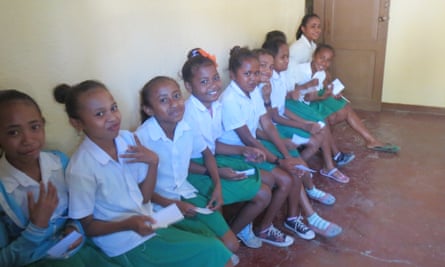
We met only a handful of foreigners during our week in Timor-Leste. And, like many visitors to this country, we were there as volunteers. Our group spent much of our time in the remote mountain village of Maubara in the west of the country, numbing gums, pulling teeth and filling holes. We – three Australian dentists, a dental nurse and me – a journalist there to spend time with my dentist dad and to scrub and sterilise tools – were there on a Rotary mission.
We travelled by troop carrier, driven by one of the dentists on the project. Our first stop was a visit to Dili’s most dramatic landmark. Cristo Rei of Dili, a 30-metre-high statue atop a hill of Jesus standing on the globe, was presented as a gift in 1996 from Indonesia’s President Suharto to celebrate 20 years of East Timor’s “integration” with Indonesia. From afar, it looks strikingly similar to Rio de Janeiro’s Christ the Redeemer. After climbing the 588 steps to the top we enjoyed breakfast by the bay surrounded by tables of expats.
The first stop for our project was the convent in Maubara, a seaside village an hour west of the capital, built around its largest landmark, an 18th-century Dutch fort. Our hosts for the week were Carmelite nuns, who have a strong network of convents across this predominantly Catholic nation. Sister Filomena, who hosted us, is also a dental therapist.
On her advice, the next day we took a long road trip into the western part of the country towards a remote mountain village called Bobonaro, just 120km away but more than five hours in driving time. At the start of the road, the temperature was warm and humid, like much of the tropics, but by the time we reached the mountains we found ourselves inside a misty cloud, much colder than we’d expected this country to be.
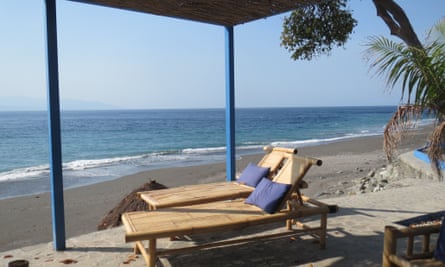
A road trip in this area is a key reason a foreigner might visit Timor-Leste. Some sections of road are new and well paved (it is a country in heavy construction mode) and, as you veer around a tight corner from high atop a cliff and enjoy uninterrupted views across a glimmering ocean you might mistake yourself as being on the Great Ocean Road or the Amalfi coast. At other times the road is marred by deep potholes, ruts and rubble. Twenty kilometres an hour feels like sprinting. It’s at this pace you can glimpse the lives of the locals in the villages and farms we pass.
There are few, if any, street signs outside the capital, Dili
Timor-Leste is predominantly a subsistence farming culture and the road is dotted with pigs, goats, chickens and dogs (and an abundance of piglets, kids, chicks and puppies). Fencelines are carefully woven together by pieces of palm frond and wood, with no need for joins. The houses are simple, mostly thatched, surrounded by carefully swept yards. On the way we stopped at a bustling outdoor covered food market selling garlic bundles, pyramids of potatoes, trays of dried fish, bunches of green bananas and smaller piles of ginger and turmeric.
My No 1 piece of advice for visiting Timor-Leste is to employ a driver and guide to enhance your journey with local knowledge – this costs about $15 to $20 a day. There are few, if any, street signs outside Dili, and few locals in the regions speak English. Instead the lingua franca is Tetum, an Austronesian language influenced by Portuguese. Our small dental team benefited from the knowledge of Aida, a local dental auxiliary who was constantly jumping from the troop carrier to ask bystanders for directions as we headed deeper into the hills.
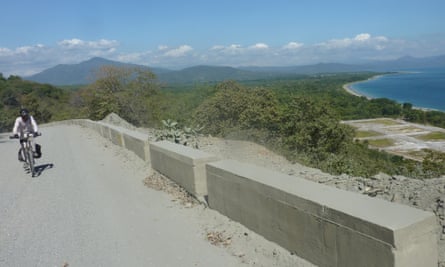
One of our key stops during this road trip was Balibo. The small museum there is based inside the house where five Australian television journalists sought refuge, and relives in photographs and stories the final days of their lives before they were murdered by the Indonesian military in 1975.
The village is large by Timorese standards, though can be explored on foot in less than half an hour, and there are developments under way that aim to transform Balibo into the gateway for tourism for the western side of the country. At the moment there are about a dozen choices for accommodation offering clean and basic rooms, with a couple of cafes that have limited opening times and menus – curries and fish are popular offerings. It is not a country yet geared to attracting the global tourist dollar.
We fortuitously timed our visit to this town just as cyclists from the country’s most popular bicycle event, the Tour de Timor, crossed the finish line on day two of their five-day 450-kilometre cycling race, met by cheering, live pop music and speeches.
After a couple more hours of neat highway-style roads followed by potholed rubble, we arrived at the convent in Bobonaro, where we immediately set up the mobile dental clinic. Over the next five days I watched in admiration as this small dental team treated schoolchildren, villagers, police officers, nuns and the local doctor, who had been educated in Cuba. All of this was achieved without shared language, the dentists and nurse leaning across to read from the sheet of translated phrases that were pinned to the wall: “Senti Moras?” Do you feel pain? “Tafui.” Spit. We treated such a large number of people in this small town that our early morning walks were filled with big waves and shy hellos from schoolchildren, and friendly nods of recognition and wide-open grins from their parents.
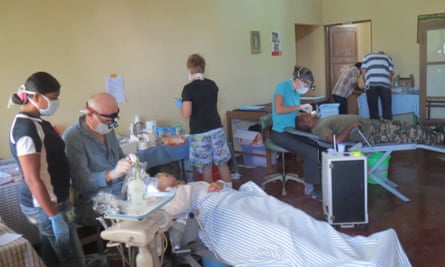
On our final day in Bobonaro we visited the area’s Morobo hot springs, set among Portuguese ruins. We all sank gratefully into the pool of steaming, sulphuric water, framed by crumbling edifices of the old bathhouse with dramatic views within a prehistoric volcanic crater.
It was then time to enjoy our road trip in reverse, which concluded with a stop at a seaside strip of bars back in Maubara for some knock-off beers at an almost-empty terrace bar. The only other patrons were a local guide and two motorcyclists from the Australian country town of Dimboola, who were in Timor-Leste for the fourth time for a three-week motorbike journey. One of them captured what many visitors find most enjoyably unique about their travel experience to this country: “There’s no bloody tourists,” he said. “I hate bloody tourists.”
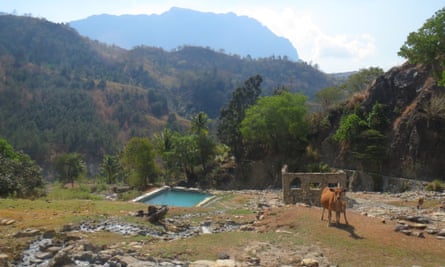
Travel warning
The Australian government says to exercise a high degree of caution in Timor-Leste because of the uncertain security situation.
Check Smart Traveller for updates.
Flight
Airnorth operates one flight daily between Darwin and Dili that departs Darwin at 5.45am. The return flight costs about $800.
Find a driver
Ministry of Tourism, Rua Martires de Patria, Farol, Dili - +670 3311 499.
Read
Balibo by Jill Jolliffe (Scribe Publications).
Ride
Tour de Timor.
Vaccines
Malaria is present in Timor-Leste. Half of the dental team took anti-malarials, the other half relied on long pants and shirts at the dusk and dawn mosquito hours.
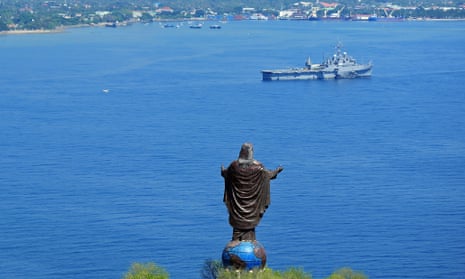
Comments (…)
Sign in or create your Guardian account to join the discussion